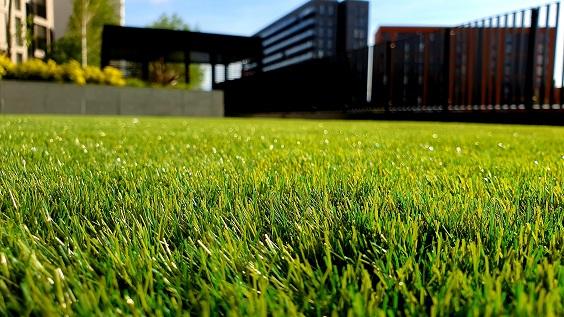A backyard lawn is a commonly found outdoor feature in residential properties, typically consisting of a stretch of grassy land that is used for recreational activities, gardening, or simply for aesthetic purposes. Backyard lawns come in different sizes, shapes, and designs, depending on the preferences and needs of the homeowner. They can be small or expansive, flat or sloping, and can be designed with various features such as flower beds, trees, shrubs, or even a small pond.
Maintaining a backyard lawn involves regular mowing, watering, fertilizing, and pest control. However, a well-maintained lawn can provide numerous benefits, including improving air quality, reducing soil erosion, and increasing the value of the property.
(We would also recommend this: DIY Fence Landscaping: 24+ Easy and Cheap Inspirations to Try Now)
How to Maintain Backyard Lawn
Maintaining a backyard lawn requires regular care and attention to keep it healthy and lush. Here are some tips on how to maintain a backyard lawn:
- Mow regularly: Regular mowing is essential to keep the grass at a consistent height and promote healthy growth. Mow the lawn once a week during the growing season, and adjust the mower blade height to keep the grass at a length of around 2-3 inches.
- Water appropriately: Watering the lawn deeply and infrequently is better than watering frequently but shallowly. Water the lawn once a week or as needed, making sure to give the grass around 1-2 inches of water.
- Fertilize: Applying fertilizer helps to provide essential nutrients that the grass needs to grow and stay healthy. Apply fertilizer in the spring and fall, following the instructions on the package for the appropriate amount and method of application.
- Control weeds: Weeds can compete with grass for nutrients and water, so it’s important to control them. Apply a weed control product or manually remove them as soon as you notice them.
- Aerate: Aerating the lawn helps to loosen compacted soil, allowing air, water, and nutrients to penetrate the root system more easily. Use a lawn aerator once a year, preferably in the spring or fall.
- Repair bare patches: Bare patches can occur due to foot traffic, pets, or disease. Repair these areas by adding grass seed or sod to promote new growth.
- Test the soil: Testing the soil can help you determine the pH level and nutrient content, allowing you to adjust the fertilizer and other treatments as needed. You can purchase a soil testing kit or send a sample to a laboratory for analysis.
- Use natural methods: Consider using natural methods for pest and weed control, such as using organic fertilizers or applying compost to the lawn. You can also use natural repellents like garlic spray or neem oil to keep pests at bay.
- Avoid overwatering: Overwatering can lead to shallow root growth and make the lawn more susceptible to disease. Water the lawn deeply and infrequently, and avoid watering in the heat of the day to prevent evaporation.
- Remove thatch: Thatch is a layer of dead grass and other organic matter that can accumulate on top of the soil, preventing air, water, and nutrients from reaching the roots. Use a thatch rake or power rake to remove excess thatch.
- Trim edges: Trimming the edges of the lawn gives it a clean and polished look. Use a string trimmer or lawn edger to keep the edges neat and tidy.
- Consider alternative landscaping: If maintaining a lawn is not practical or desirable, consider alternative landscaping options such as ground covers, gravel, or native plants that require less maintenance
(We would also recommend this: Backyard Deck Ideas: 28+ Easy DIY Designs for Affordable Home Improvement)
By following these tips, you can maintain a healthy and beautiful backyard lawn that will be a source of pride and enjoyment for years to come.
